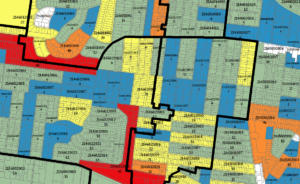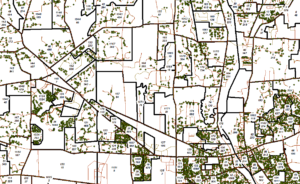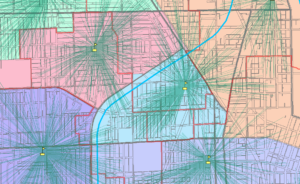About My Studies
Increasingly, school districts are deciding to include demographic data analysis and school enrollment projections in their planning processes. Typically, these studies are used to kick off campaigns for new facilities or enhancements to existing facilities. In some cases, these studies have been used to project special population groups and enrollment impacts within districts, determine the "tensile strength" of existing facilities and programs, or to compare in-house enrollment projections. In other situations, school districts will use demographic studies to plan alternative use of buildings, extracurricular activities and programs, and curriculum changes.
With differing needs and requirements for these types of studies, school districts have found it beneficial to choose the study components that correspond more directly to their immediate planning task environments. My studies are customized to meet these needs.


Many of our clients require student enrollment projections or an evaluation of existing projections and methodologies. We use a cohort component method to project grade-by-grade enrollments and live births to project Kindergarten class sizes. Geographic information systems technology is used to geocode or address match births and, where attendance areas do not completely contain student enrollments, student records to develop geographically consistent enrollment counts.
With the capability of analyzing student locations, school districts have developed optimal transportation routes, redrawn school district attendance areas, and assessed the impacts of planned housing developments within their boundaries. These and other uses of geodemographic studies provide a data-driven foundation for administrative decision-making and public engagement campaigns.
With the Covid-19 pandemic, many school districts are facing new planning challenges. As enrollments dipped between 2019 and 2022, some districts have experienced a “return-to-school” movement with students returning in later grades.


Other districts have experienced continuing enrollment declines which may not be related to the out-migration of student households.
As total enrollments change, it’s advantageous to look at the relationship between in-district births and the size of future kindergarten classes.


Typically, the better predictor of future enrollments is the history of changes in student classes or cohorts based on resident geography.
With the planning challenge of accommodating district students and pedagogical programs, it’s beneficial to understand the spatial distribution of students and the possible impacts on current school district geography.


And, from time to time, districts find the need to repurpose building assets and reassign students to new attendance areas.
This consultancy uses geographical information system tools and accurate local government data to provide a data-driven platform for developing resident enrollment projections, assessing future enrollment impacts, developing sustainment plans for accommodating current district students, and evaluating the need for new facilities.
RECENT/CURRENT CLIENTS
- Affton School District (MO)
- Batavia Public School District 101 (IL)
- Benjamin School District 25 (IL)
- Booneville R-1 School District (MO)
- Community High School District 94 (IL)
- DeKalb CUSD 428 (IL)
- Evanston/Skokie CUSD 65 (IL)
- Fox C-6 School District (MO)
- Geneva CUSD 304 (IL)
- Hazelwood School District (MO)
- Kirkwood R-7 School District (MO)
- Naperville CUSD 203 (IL)
- Ritenour School District (MO)
- River Trails School District 26 (IL)
- Webster Groves School District (MO)
School and Census Geographies
About Me
PROFESSIONAL EXPERIENCE
- Principal, Charles Kofron, Ph.D. LLC, Clayton, Missouri
- GIS Manager, St. Clair County, Illinois
- Director, ETSB911, St. Clair County, Illinois
- Program Manager and Systems Architect, GeoBase, Air Mobility Command, USAF Scott Air Force Base
- Director, Southwestern Illinois GIS Resource Center
- Director, The Center for Organizational Research and Development Southern Illinois University Edwardsville
- Statistician, US Census Bureau, Suitland, Maryland


TEACHING EXPERIENCE
- Lewis and Clark Community College
- Southern Illinois University Edwardsville
- Saint Louis University
- Cardinal Glennon College
- University of Missouri - St. Louis
- Authorized ESRI Instructor
- Certified Emergency First Responder Instructor
COLLABORATIONS AND PARTNERSHIPS
- Creative Entourage
- Ittner and Associates
- Dickinson Hussman Architects
- FGM Architects
Please contact me for a resume or vita
- Kuhlmann Design Group
- District Leadership Solutions LLC
- Cordogan Clark and Associates
COLLABORATIONS AND PARTNERSHIPS
- UnicomARC, St. Louis
- Ittner and Associates
- Dickinson Hussman Architects
- FGM Architects
- Arcon and Associates
- Kuhlmann Design Group
- District Leadership Solutions LLC
- Dressel's Dive Club International
- The Great American Diving Company
Please contact me for a resume or vita



